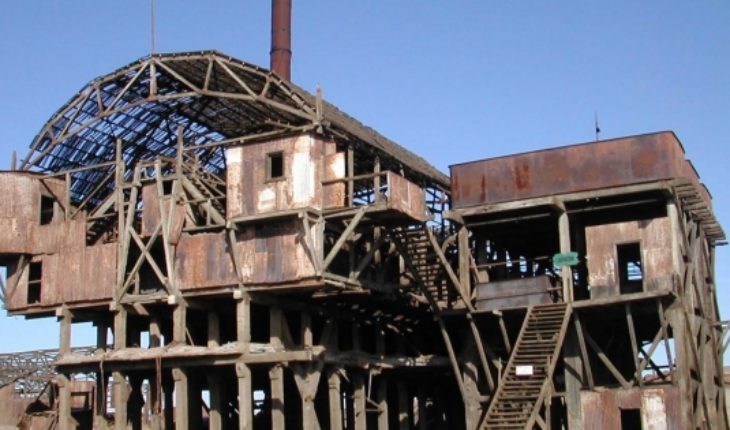Unesco withdrew on Tuesday the Humberstone and Santa Laura (Chile) salt peter and field offices from the Mu Heritage List Endea, and congratulated the Chilean state on its “sustained effort” to ensure its preservation.
The decision was taken in applause at the forty-third session of the World Heritage Committee, which is being held in the Azerbaijani capital and concluded on 10 July.
In its resolution, the Committee warmly “congratulated” Chile on its “sustained effort over a period of almost 15 years to implement a comprehensive package of measures” to ensure the protection of the site.
“It was an exemplary process,” the project said, as the head of the Latin American and Caribbean Unit of the Secretariat of the Unesco World Heritage Convention, César Moreno-Triana, presented the project.
The Committee highlighted the implementation of a management plan and security measures for the site and its visitors, as well as the identification around it of a protection area of about 3 million square meters, called the Typical Zone by legislation Chilean.
The representative of Spain described as an “example to be followed” and as a “reference of good practice”, the work of the Chilean authorities and all the entities involved in the preservation of the Humberstone and Santa Laura salt peter works.
The delegations of Mexico, Cuba, Guatemala, Norway, China, Hungary, among other countries, joined in the congratulations to Chile.
The salitreras Humberstone and Santa Laura, administered by the Salitre Museum Corporation, in 2005 were declared a World Heritage Site by Unesco and, at the same time, included in the World Heritage List in Danger.
Located in the pampas of Tamarugal, in the Atacama desert, and separated by a distance of 1.5 kilometers, they were at the time the world’s largest producers of saltpeter, a natural mixture of potassium and sodium nitrates, the fertilizer that dominated the market from the mid-19th century to the beginning of the 20th century.
The offices, which were opened in 1872, captured labour forces from Chile, Peru and Bolivia and many other countries, and operated according to the boom or bust in demand for saltpeter in international markets until 1950, when they closed permanently.
According to the Salitre Museum Corporation, Humberstone and Santa Laura constitute “an integral and representative set of the phenomena of saltpeter the ways of work and life that it generated”.
Created in 1997 by former inhabitants of the salt peters of northern Chile, the Corporation in January 2002 acquired Humberston y Santa Laura with the purpose of restoring them and converting them into museums.
With the exploitation of the salitreras, the Pampina cultural identity emerged, formed by the mixture of the different profiles of the Americans, English, Chileans, Peruvians, Bolivians, Argentines and people of other nationalities, who amalgamated own customs and codes of communication.
In addition to the salt works offices Humberstone and Santa Laura, Chile has five other world heritage sites: the Andean road system Qhapaq ‘n (which shares with Argentina, Bolivia, Colombia, Ecuador and Peru), Valparaiso, Campamento Sewell, Iglesias Chiloé and Rapa Nui National Park.
translated from Spanish: Humberstone and Santa Laura leave the World Heritage List in Danger
July 2, 2019 |





